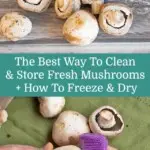
Mushrooms are one of those foods that you rarely find a tepid response too.
“Mushrooms? Oh, I love them; I wouldn’t order a pizza without them.”
“Mushrooms? Gross! Why would anyone want to eat those slimy things?”
I fall very firmly into the “love them” category. In fact, I love them so much that from early spring through late fall, I’m out wandering through the woods foraging for wild mushrooms of all kinds. Even the inedible ones fascinate me.
On our way to a camping trip last year, my sons were busy discussing what they were going to do first when we got to the campground. My oldest stopped mid-sentence and said, “Mooooom, I know why you chose this place. It’s not about camping; you’re looking for mushrooms!”
Guilty as charged, and I found them too.
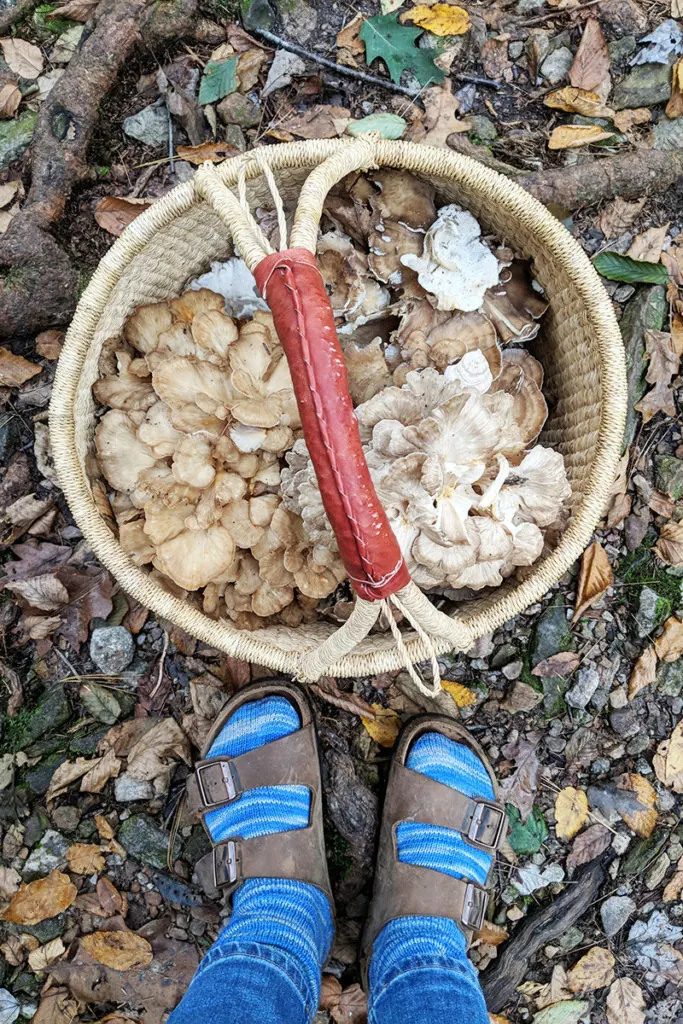
Whether you’re a forager or just searching through the local offerings at your supermarket, we all run into the same problem.
You bring perfectly beautiful mushrooms home only to open the fridge and find funky, slimy blobs just a few short days later.
It definitely puts a kink in your dinner plans when your star ingredient has bit the dust.
Why do mushrooms go bad so quickly?
The problem lies in their water content. Mushrooms are around 80-90% water. That’s a whole lot of water.
Once you factor in the time it takes to ship them from the farm to the store, that doesn’t leave you with much of a shelf life left. Then when you put them in the fridge, they’re introduced to a cold, damp environment. The poor little guys don’t stand a chance.
Foraged vs. Store-bought
This short shelf life is one reason I love foraging for mushrooms in the wild or purchasing them at local farmer’s markets. There’s no shipping time, so they usually last several days longer than what you would find at the supermarket. And the variety you can find in the wild far surpasses those found in the store.
If you love cooking with mushrooms, I highly recommend you seek out a local mycology club and start learning about all of the wonderful edible mushrooms that grow near you and how to identify them safely.
If the idea of identifying wild mushrooms seems daunting, you can grow them at home with super-easy kits. Here’s our pick of the 10 Best Mushroom Growing Kits.
A note about foraging for mushrooms
I will tell you what I tell everyone who asks me how to identify edible mushrooms safely – always use a knowledgeable human as your first identification source, a good guidebook as your second identification source, and never the internet.
But How Do I Store Mushrooms?
Ideally, the best way to use mushrooms is to cook them the same day you acquire them, but that rarely happens. Luckily there are a few ways to make those lovely fungi last longer no matter where they came from.
Paper Bag
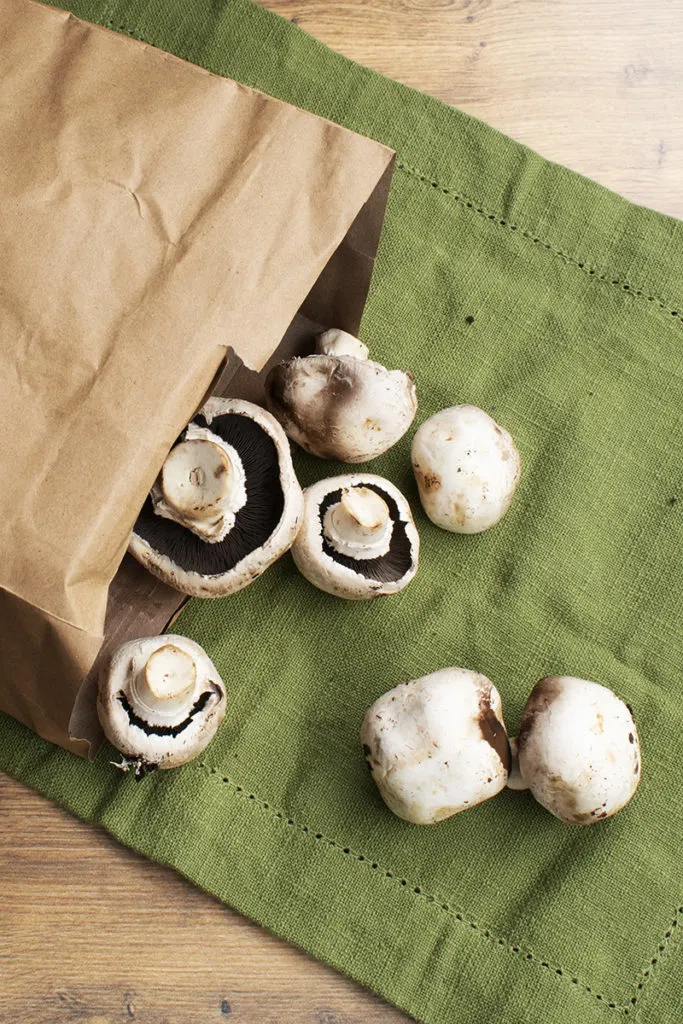
The easiest way to buy yourself a few extra days is to store mushrooms in a paper bag.
Remove them from the packaging as soon as you get them home and gently place them in a paper bag. Don’t clean them, leave them as is. Put the bag in the fridge on the middle shelf and leave the top open. The paper bag will help to absorb excess moisture.
Stored in this way, mushrooms will keep for a week to ten days.
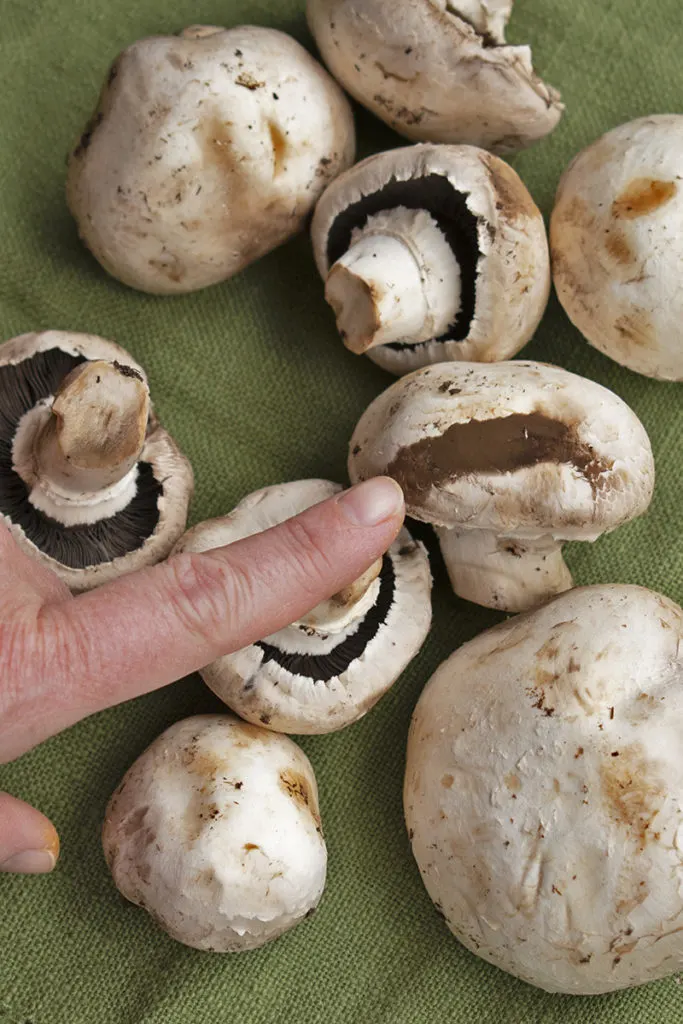
Never store them in the crisper drawer. It’s too humid, and they will spoil faster.
Freezing Mushrooms
Flash freezing is an excellent storage option. The only drawback is they must be cooked first. By cooking the mushrooms, you’re destroying the enzymes that lead to spoilage. This is my favorite method to have mushrooms ready at hand for things like pizza and eggs and stroganoff. Flash freezing is perfect for white buttons or small portabellas.
Simply clean (more on how later) and slice the mushrooms, then sauté them. When sautéing, give them plenty of room, so they don’t touch. Doing so will ensure tender, rather than rubbery, mushrooms. Once cooked, place them directly on a baking sheet and pop it into the freezer.

The mushrooms will freeze solid in about 15-20 minutes and can then be transferred to a freezer bag.
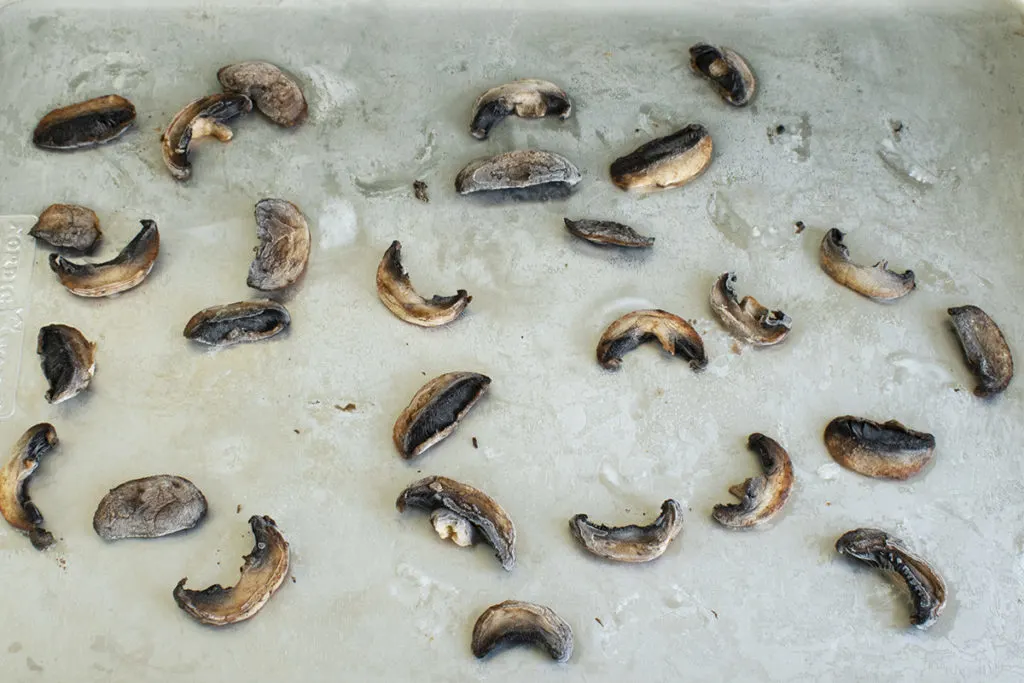
When you’re ready to use them, don’t thaw them. Just toss them directly into whatever you’re cooking. It couldn’t be easier. Frozen, they will last about three months.
Drying Mushrooms in the Oven
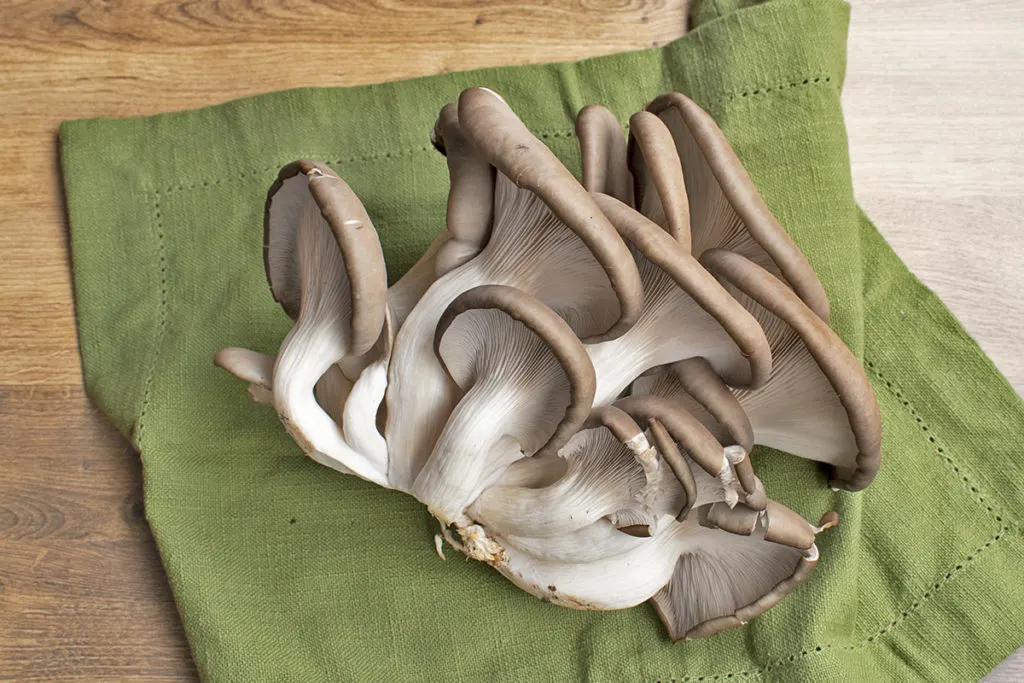
If I’m not going to use mushrooms right away, drying them is my favorite method for storing them. I don’t own a fancy dehydrator; I use my oven.
I prefer this method for most of my foraged mushrooms or ones that I purchase at a farmer’s market. I like the end result when rehydrating them compared to freezing for varieties such as oyster, chanterelles, and hen-of-the-woods.
Clean your mushrooms well before drying them; this is especially important for foraged varieties. Slice them into pieces that are relatively uniform in size and thickness, no more than a 1/4” thick, to ensure they dry at the same rate.
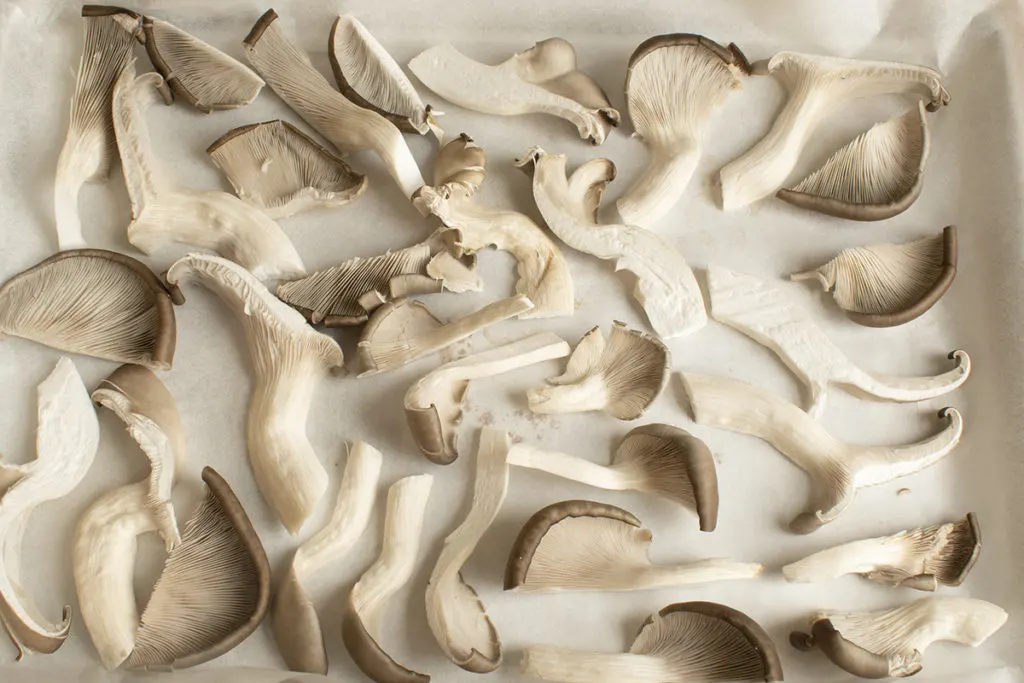
Place them on a baking sheet and put them into a 170-degree F oven for an hour. After an hour, flip them over. Start checking them every half hour once they’ve been flipped. Remove any pieces that are completely dried. They should be crisp, not bendy.
Let them cool completely before storing them in a clean mason jar or other airtight containers. Dried mushrooms can be stored for roughly three months.
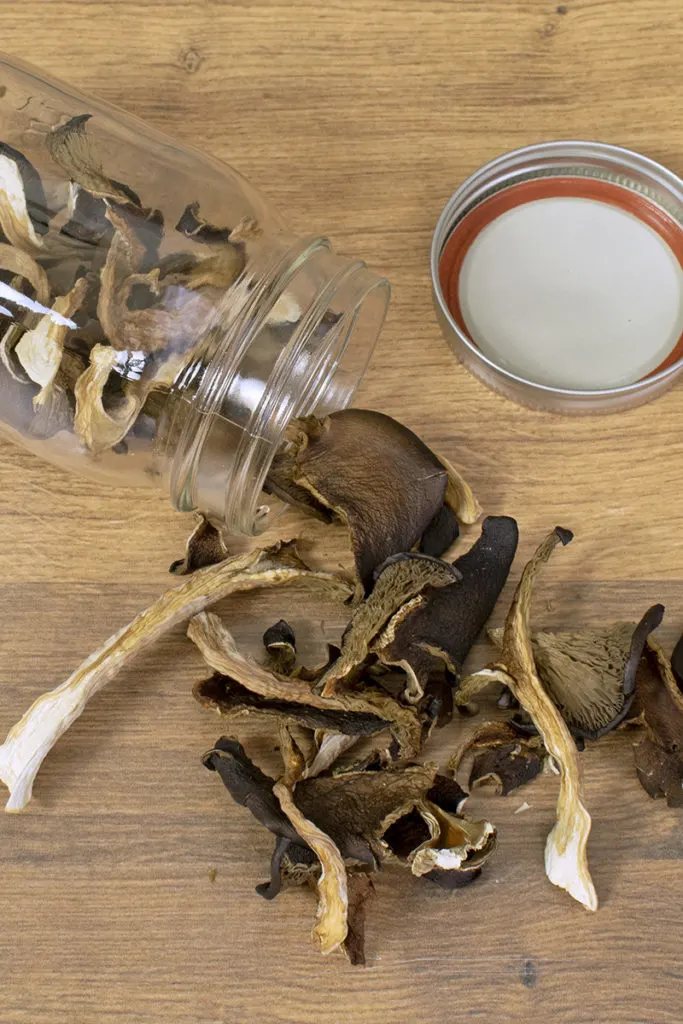
To rehydrate, add them directly to soups and stews. Or place them in a heat-proof bowl and pour boiling water over them to cover them. Place a clean kitchen towel over the bowl and let them sit for 30 minutes.
How to Clean Mushrooms the Right Way
When it comes to mushrooms purchased from the store, there’s very little you need to do to clean them. It’s not recommended that you wash them, but rather that you brush any of the growing medium off with a soft brush. I find these little silicone-bristled sponges work perfectly for cleaning mushrooms. They do a good job without destroying the cap.
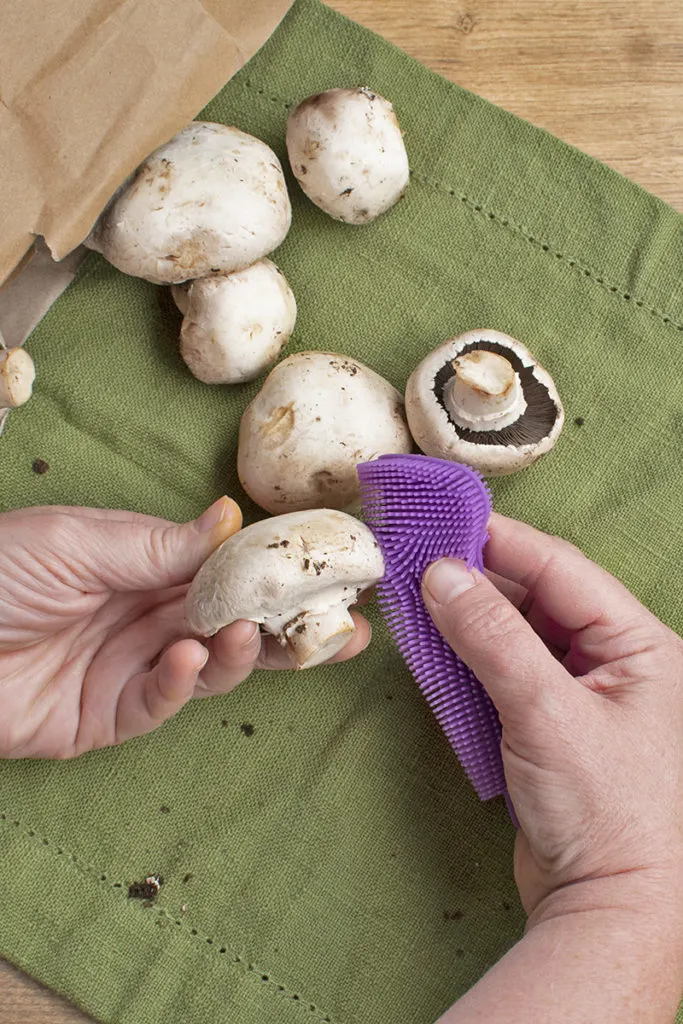
Foraged mushrooms are different altogether.
They definitely need to be washed, mainly to evacuate any, ahem, residents before cooking them. I once brought home a beautiful head of hen-of-the-woods that I’d foraged, and when I cleaned it, I was surprised to find a wee little newt hiding in its fronds.
Fill your sink with cold water. If you’re washing a large mushroom, such as chicken-of-the-woods or hen-of-the-woods, you’ll want to cut it into manageable sized pieces first.
Submerge it in the water and let it sit for a few minutes. Swish the mushroom around and use a soft brush to remove any dirt.
It’s essential to dry the mushrooms thoroughly before cooking them; otherwise, you’re basically steaming them. And no one likes chewy, rubbery mushrooms.
I have found that a salad spinner works wonders for getting excess water out of delicate fronds.
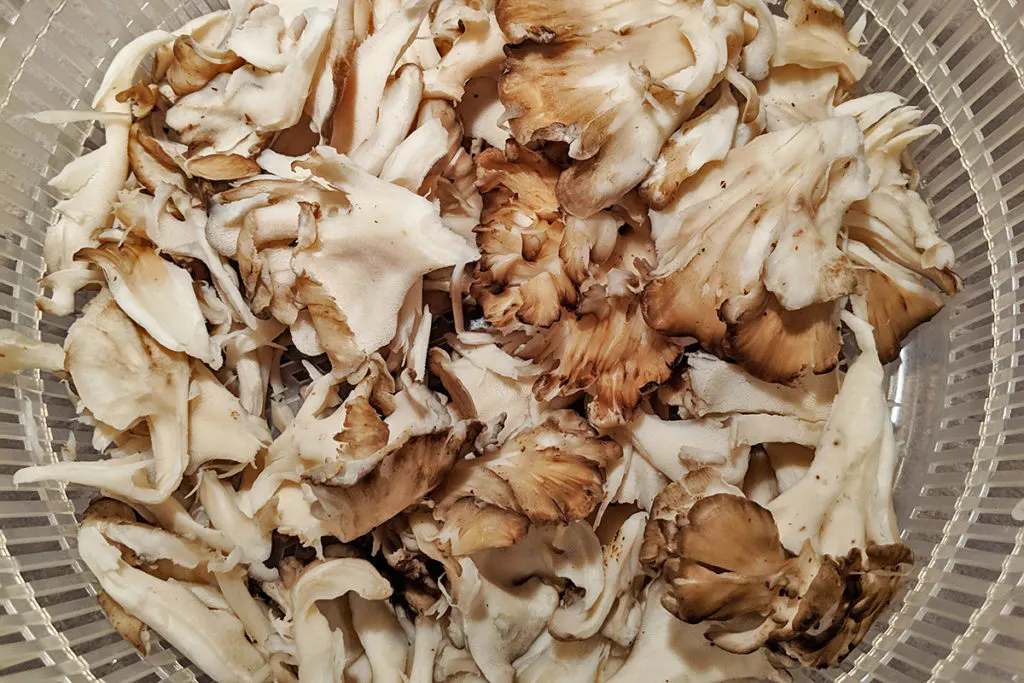
After the salad spinner, I gently pat them dry with a clean kitchen towel. Then you’re ready to cook or paper bag or freeze or dry them.
Mushrooms are indeed one of the most interesting things growing on this planet. Now that you know several ways to make them last a little longer, I hope you’ll try cooking with them more often.
Now if you’ll excuse me, there’s a pizza with chanterelles on it in my oven calling my name.

Get the famous Rural Sprout newsletter delivered to your inbox.
Including Sunday musings from our editor, Tracey, as well as “What’s Up Wednesday” our roundup of what’s in season and new article updates and alerts.


